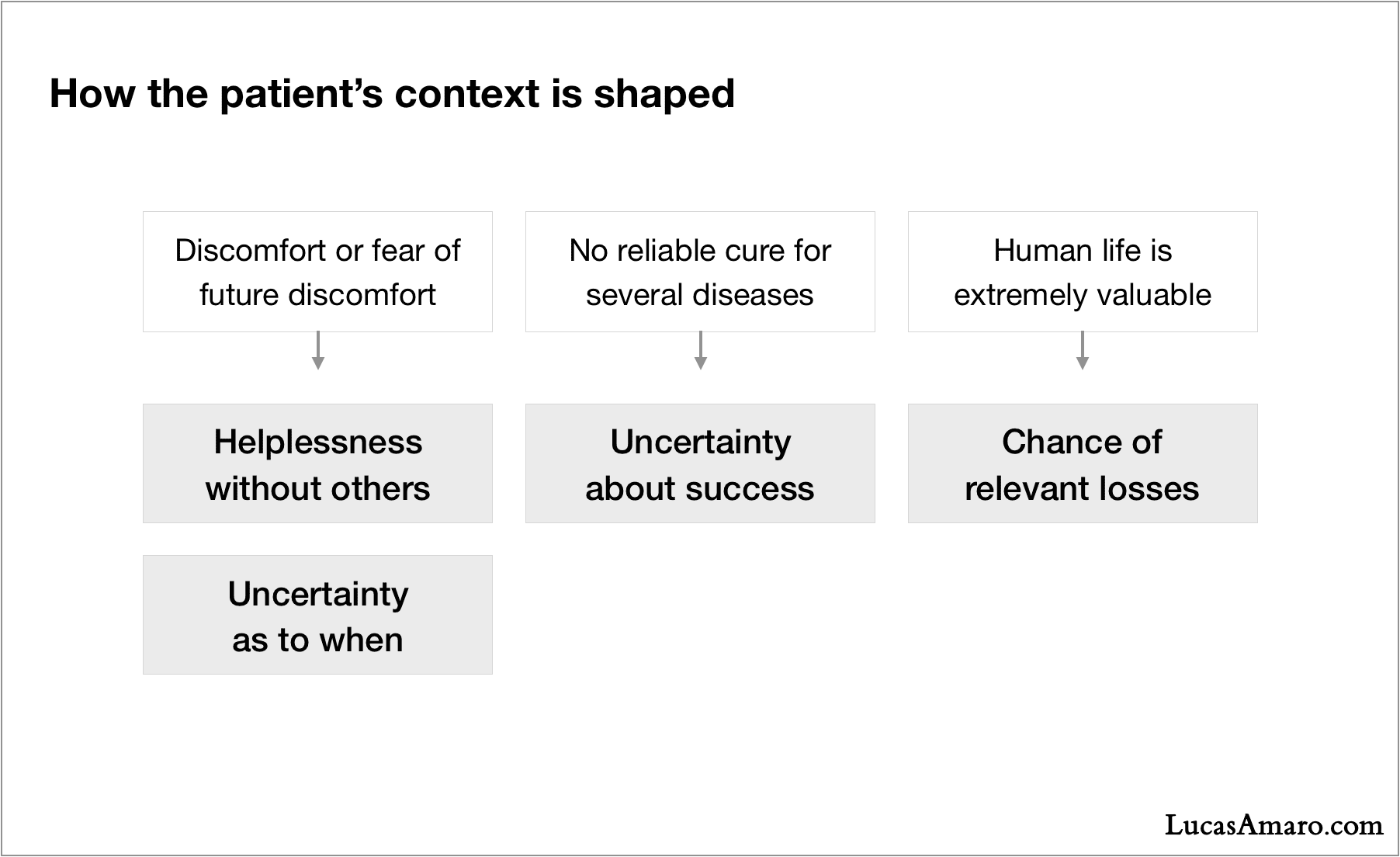The difficulties patients face
Part three of our series Healthcare from First Principles
In part one we have explained why discomfort (not desire) is the trigger for healthcare. I argued there that the reasons anyone buys healthcare are either to restore the well-functioning of mind and body or to get peace of mind against future health issues.
Next, in part two we have discussed two facts that lay at the foundations of healthcare:
- Every single human life is irreplaceable
- There is still no reliable cure for several devastating diseases
Now, let’s consider the patient.
The patient is, in principle, all of us. Almost every single human being will, sooner or later, consume healthcare. Some lucky ones will need it only mildly and occasionally. The ones living with a chronic condition will need it intensively and continuously, throughout their lifetimes.
Every patient finds herself across spectrums of helplessness and uncertainty. Take, for instance, a youngster with a cold. She faces a level of helplessness and uncertainty of a different kind than a senior lady with a metastatic cancer tumor. Nevertheless, both need help — they need care.
The child may be taken care of by her relatives and be cured in just a few days. The lady is fighting for her life, hopefully with the support of a competent medical team in a cancer center.
With all that in mind, I would say that four elements shape the context and the needs of patients:

Let’s unpack each one of these four elements:
Helplessness without others — patients are unable to solve most of their healthcare needs by themselves. Even if they are technically competent — say, they are doctors themselves —, they are often hindered by a physical and or psychological condition (remember: discomfort). They may also depend on specific equipment only available at certain locations — e.g., sterilized material found in hospitals.
Uncertainty as to when — the moment in time in which the patient may need healthcare is largely unpredictable. Scheduled preventive visits do remove some element of the unpredictability, but not completely — after all, there is no way to know if some issue will be detected in an exam or lab test.
Uncertainty about success — it is clear that many diseases have no reliable cure. Even in the case that the perfect intervention is well known, there is always a chance that something could go wrong — e.g., acting too late, human misjudgments, contamination.
Chance of relevant losses — by definition, if the patient is in need of healthcare, his or her “ability of functioning well” (or living at all) is probably under assault and can be lost. Since life is considered highly valuable, there are chances of relevant losses for patients themselves — and for their loved ones.
Since the patient is the ultimate beneficiary of healthcare, I posit these four elements not only shape the patient’s state of affairs, but also play a central role in how healthcare systems come together — as the rest of this series will show.
December 2018
Healthcare from First Principles
Series about the fundamental reasons why healthcare systems are so convoluted, and why that is unlikely to change in the near future:
- Healthcare is about discomfort
- The two most fundamental facts in Healthcare
- The difficulties patients face · Here
- The roles of physicians and health insurers · Next